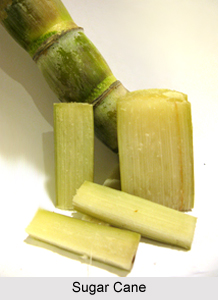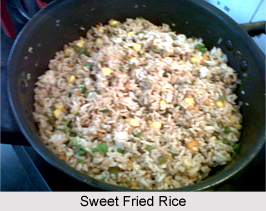 Sweets in Buddhist Cuisine mainly include Honey and certain variety of sweets which were common in Buddhist society. Among the sweets of Buddhist cuisine in ancient India honey played a very important role. It was collected from three varieties of bees which include small bees, big bees and the third variety called Kuttiya. Along with this sugarcane was the most common source of sweet in Buddhist cuisine. While the juice of Sugarcane was extracted with the help of machines, its dried powder was used to manufacture Guda which was the second source of sweet in Buddhist cuisine. Among the other products of sugarcane, granulated sugar was common along with sugar candy.
Sweets in Buddhist Cuisine mainly include Honey and certain variety of sweets which were common in Buddhist society. Among the sweets of Buddhist cuisine in ancient India honey played a very important role. It was collected from three varieties of bees which include small bees, big bees and the third variety called Kuttiya. Along with this sugarcane was the most common source of sweet in Buddhist cuisine. While the juice of Sugarcane was extracted with the help of machines, its dried powder was used to manufacture Guda which was the second source of sweet in Buddhist cuisine. Among the other products of sugarcane, granulated sugar was common along with sugar candy.
 Sweets in Buddhist Cuisine, besides this, included another type of sweet delicacy known as sweet fried rice and sweet balls which were in common use. It also included some varieties of sweet cakes namely Mandaka (cakes stuffed with molasses and ghee), Madhusirsaka (also a kind of sweet cake), Gulalapaniya, Ghayapunna (the Modemghepara), Sihakesara and Morandaka (sweets prepared from milk and shaped like the eggs of peacock.) Some of these were also mentioned in the Jain texts.
Sweets in Buddhist Cuisine, besides this, included another type of sweet delicacy known as sweet fried rice and sweet balls which were in common use. It also included some varieties of sweet cakes namely Mandaka (cakes stuffed with molasses and ghee), Madhusirsaka (also a kind of sweet cake), Gulalapaniya, Ghayapunna (the Modemghepara), Sihakesara and Morandaka (sweets prepared from milk and shaped like the eggs of peacock.) Some of these were also mentioned in the Jain texts.
Thus Sweets in Buddhist Cuisine were slightly different from those in the traditional ancient Indian society which were largely made up of milk and ghee.
This article is a stub. You can enrich by adding more information to it. Send your Write Up to content@indianetzone.com




















